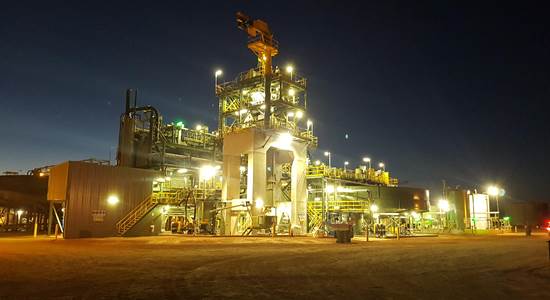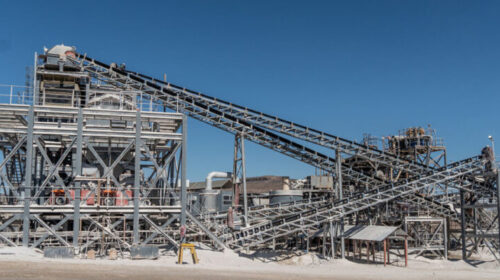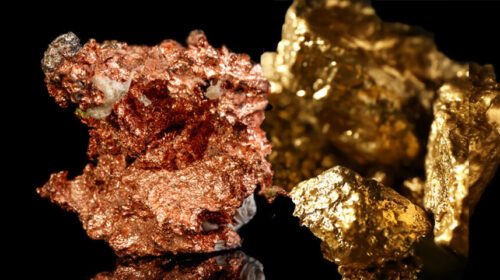Metso Outotec HIGmill has increased gold recovery by approximately 6% for Sunrise Dam Gold Mine
The regrind project at Sunrise Dam has so far achieved an estimated average increase in gold recovery of 6%, and is providing consistent and steady operation. The mill is achieving the design product size of 80% passing 10μm and continues to be operated with minimal operator input.
Sunrise Dam Gold Mine, owned by AngloGold Ashanti (AGA), is located 55 km south of Laverton, Western Australia. Operation began in 1997, with a major upgrade to the plant completed in 2001. Following this upgrade and various de-bottlenecking projects, the site has increased throughput to 4Mtpa.
As the amount of sulphide material treated increased, gold recovery decreased in response to the refractory nature of the ore. Testwork indicated that a 6% increase in recoverable gold could be obtained by grinding the sulphide material to 80% passing 10μm and leaching the mill product combined with the flotation tails in the existing carbon-in leach (CIL) circuit. This is where Metso Outotec comes in.
World’s largest stirred mill
In 2017, AngloGold Ashanti (AGA) embarked on a Recovery Enhancement Project to increase gold recovery. The project required the existing screened cyclone overflow to be redirected into a new flotation and ultra-fine grinding circuit, producing concentrate up to a rate of 400,000 t/a. Metso Outotec supplied six TC200 TankCell® flotation units, one 14m High Rate Thickener and one HIGmill® HIG3500/23000. At this time (June 2021), the HIGmill is the world’s largest stirred mill supplied into a pyrite concentrate regrind duty. The HIGmill grinds pyrite/ arsenopyrite flotation concentrate to 10μm in order to expose refractory gold for leaching. Despite its size and significance, only a single operator is required for the flotation, thickener and HIGmill area.
Process and mechanical design
Based on the vigorous testwork and strict design criteria, a HIGmill size of 3500kW with a 23,000L body was selected. To match the finer grind size, media of a 2 to 3mm size range and media specific gravity (SG) range of 3.8 to 4.1 was required. Media is retained in the mill due to media fluidisation conditions facilitated by settling velocity and flowrate. Media is also held within the grinding chambers (stator compartments) by the centrifugal force generated by the rotors. The design inlet temperature of 30°C, 60kWh/t, 45%w/w yielded an exit temperature of 66°C. The HIGmill was designed with a high alarm temperature limit of 70°C and a trip limit of 85°C. An energy balance also confirmed that the exit temperature was suitable for the materials of construction.
Delivery and installation
Due to a successful collaboration with AngloGold Ashanti, the Recovery Enhancement Project was delivered very quickly. Installation time for the complete upgrade project was approximately six months. Prior to these works, the HIGmill delivery time was 30 weeks ex-works. Once the civil foundations were ready, the HIGmill installation took four weeks, with cold and wet commissioning taking just one week. Both Metso Outotec and the site are happy with how the Recovery Enhancement Project was completed two weeks earlier than expected – and under budget.
Commissioning
Commissioned in May 2018, the mill has been operating since June 2018. Survey data was collected during ore commissioning to track performance as well as to further optimise the mill. It is important to measure the speed/power/slurry density/ media filling percentage flowrate relationship during commissioning for both water and slurry, as the relationship is different for each application. The water calibration curve conducted during wet commissioning was performed with 19 tonnes of media, a media size range of 2-4mm and a media specific gravity (SG) of 3.9 t/m3. These values are used to assess the mill’s capability and for future operational guidance. These results can be put into power models for prediction of the operation and assist with future optimisation of the rotor design.
High plant and machine availability
HIGmill’s overall utilisation is 97%, with an availability of 98.6%. The availability is governed by the shell liner wear life interval of approximately 26 weeks, harmonizing with other general plant shutdowns. This allows for a further two inspections per year. The reline periods run for 36 hours each, excluding operator shutdown and start up time. The main plant shutdown period is generally between 36-48 hours, governed by the primary milling circuit relines.
Scaleup testwork
In 2020, Metso Outotec conducted onsite scaleup pilot testwork to study the effect of residence time and operational density on the energy efficiency. It was shown that residence time of 2 and 3 mins in the HIG5 test unit didn’t significantly affect the energy efficiency. These results indicate that the full-scale operation is slightly more energy efficient than the HIG5 pilot testwork. The measurements allow for the gearbox efficiency, motor under partial load and motor cable transmission.
Successfully meeting expectations
After successful commissioning, optimizing the life of wear component was crucial. AGA expected the HIGmill to meet a minimum plant shutdown interval of 17 weeks. Within 18 months, the HIGmill service interval between shutdowns gradually increased to 23 weeks, thus effectively meeting AGA’s central target. By matching the HIGmill shutdown timing to normal plant shutdowns, the annual HIGmill availability is improved, in addition to greater machine utilisation and increased gold recovery.
18 total views , 2 views today





